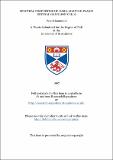Spectral properties of dark-adapted plaice retinal ganglion cells
Abstract
1. The spectral, spatial and temporal properties of receptive fields of dark-adapted, on-off retinal ganglion cells in the intact eye of the plaice, have been analysed by recording responses from their axon terminals in the superficial layers of the contra-lateral optic tectum with indium micro-electrodes. 2 Two cell-types have been identified on criteria of discharge patterns. The first type gives spectrally opponent "on-off" responses to coloured stimuli, with no subdivision of receptive fields into centre and periphery. On and "off" response-components are mutually inhibitory. The second type gives slow-adapting, "on-off" or "off" responses for different stimulus positions within the receptive field, with centre-surround or adjacent field patterns. Only "on-off" centre, off"-surround cells, or "off"-centre, "on-off" surround cells have been found, "On-off" centre cells exhibit mutual antagonism between field centre and surround. "Off"-centre cells possess inhibitory centres. This cell-type gives only weak opponent, or possibly non-opponent responses. 3. Moot cells of each type receive rod input in addition to input from cones. At stimulus intensities suprathreshold for cones, response-components give spectral maxima or more of four wavelength ranges; blue, 440-460 mum; blue-green, 470-490 mum; green, 510-540 mum; and orange, 560-590 mum. No cello give red sensitivity maxima. At low stimulus intensities all cells with rod input give a single spectral peak between 520 and 530 mum.
Type
Thesis, PhD Doctor of Philosophy
Collections
Items in the St Andrews Research Repository are protected by copyright, with all rights reserved, unless otherwise indicated.

